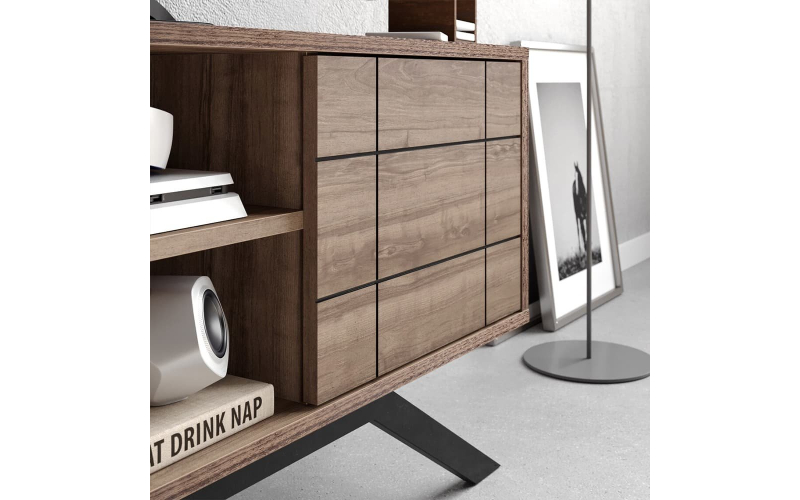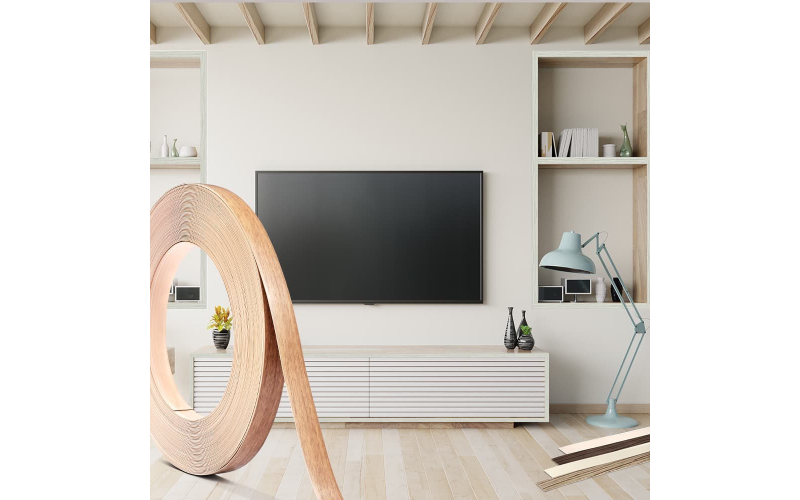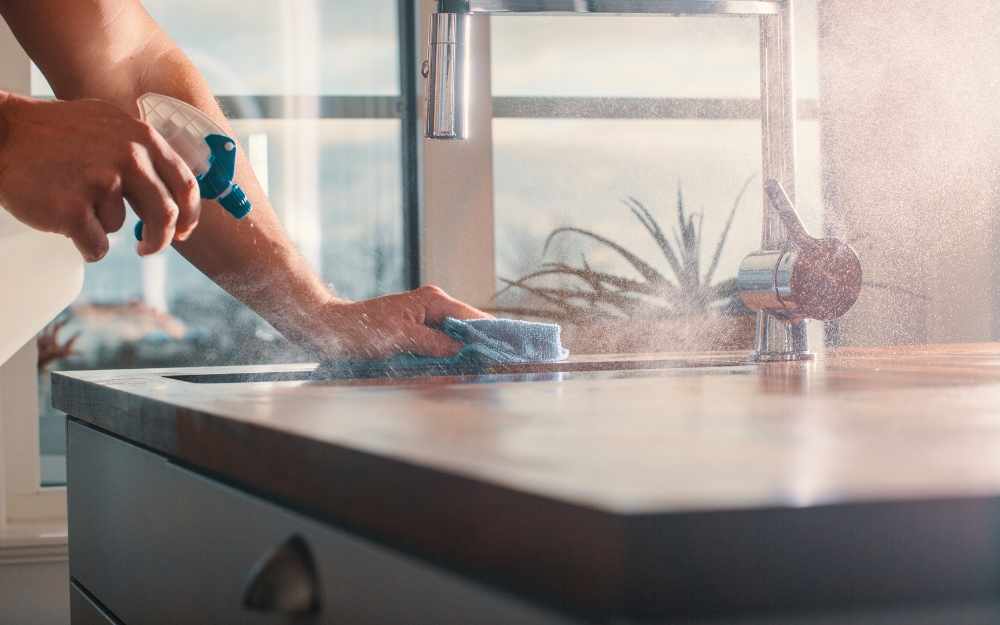Furniture edge banding tape is a game-changer for DIY enthusiasts looking to elevate their home improvement projects. This versatile material can transform ordinary pieces into professional-quality furniture with minimal effort. For instance, you can revamp old cabinets by applying wood veneer edge banding tape to their edges, giving them a fresh, polished look. Additionally, edge banding tape can be used to create custom shelving units. By applying a contrasting color or material to the edges, you can add a unique design element that stands out. Another creative idea is to use edge banding tape on tabletops or countertops made from plywood or MDF. This not only protects the edges from wear and tear but also provides a seamless, attractive finish.
Understanding the Environmental Impact of Furniture Edge Banding Tape
As sustainability becomes a growing concern, understanding the environmental impact of furniture edge banding tape is crucial. The material composition of edge banding tape significantly influences its ecological footprint. PVC (Polyvinyl Chloride) edge banding, for example, is durable and affordable but has a higher environmental impact due to the chemicals involved in its production and disposal. In contrast, ABS (Acrylonitrile Butadiene Styrene) is a more environmentally friendly alternative, being non-toxic and recyclable. Wood veneer edge banding, made from thin slices of real wood, offers a natural and renewable option, although it may require more resources in terms of raw material harvesting. Melamine edge banding, often made from paper impregnated with resin, provides another eco-friendly choice, especially when sourced from sustainably managed forests.

Creative Uses of Furniture Edge Banding Tape Beyond Edges
While furniture edge banding tape is primarily designed for finishing the edges of wood panels, its utility extends far beyond this traditional application. Innovative crafters and DIY enthusiasts have discovered numerous creative uses for this versatile material. For instance, edge banding tape can be used to create custom designs and patterns on flat surfaces. By cutting and arranging the tape into geometric shapes or intricate designs, you can add a decorative touch to tabletops, cabinet doors, and even walls. Additionally, edge banding tape can be employed to refurbish or customize existing furniture pieces. For example, you can apply it to the edges of shelves, picture frames, or drawer fronts to introduce a pop of color or texture. Another creative use is to reinforce the edges of fabric items, such as book covers or folders, providing both durability and aesthetic appeal.
Comparing Different Materials of Furniture Edge Banding Tape
Furniture edge banding tape is available in a variety of materials, each offering unique characteristics and benefits. Understanding these differences is essential for selecting the right type for your specific needs. PVC (Polyvinyl Chloride) edge banding is widely used due to its durability, flexibility, and affordability. It is resistant to moisture, making it suitable for kitchens and bathrooms. However, its production and disposal have environmental concerns. ABS (Acrylonitrile Butadiene Styrene) is an eco-friendlier alternative, being recyclable and non-toxic. It offers similar durability and flexibility as PVC but with a lower environmental impact. Wood veneer edge banding, made from thin slices of real wood, provides a natural and authentic look, making it ideal for high-end furniture and projects where aesthetics are crucial. It can be stained or finished to match the furniture piece, but it may require more careful handling and maintenance.
Maintenance Tips for Furniture Edge Banding Tape
Proper maintenance of furniture edge banding tape is essential to ensure its longevity and continued aesthetic appeal. Regular cleaning is the first step in maintaining edge banding. Use a soft cloth and mild detergent to gently wipe the surface, avoiding harsh chemicals that could damage the material. For wood veneer edge banding, periodic polishing with a wood-friendly product can help preserve its natural luster. It’s also important to protect the edges from excessive moisture, as this can weaken the adhesive bond and cause the tape to peel. In high-humidity environments, using a dehumidifier can help maintain optimal conditions for the adhesive. If the edge banding starts to peel or lift, it can often be re-adhered using a heat gun or iron on a low setting.
Choosing the Right Furniture Edge Banding Tape for Your Projects
Selecting the appropriate furniture edge banding tape for your project involves considering several factors to ensure the best results. The material of the edge banding tape is a primary consideration. PVC and ABS are ideal for projects requiring durability and moisture resistance, such as kitchen cabinets or bathroom vanities. For a natural and upscale appearance, wood veneer edge banding is an excellent choice, especially for furniture pieces where aesthetics are paramount. Melamine edge banding is suitable for cost-effective projects and offers a wide range of colors and patterns. The width and thickness of the edge banding tape should match the dimensions of the panels you are working with. It’s essential to choose a tape that covers the entire edge without overhanging excessively. The type of adhesive is another crucial factor.
Top Benefits of Using Furniture Edge Banding Tape in Home Decor
Furniture edge banding tape offers numerous benefits that make it a valuable addition to home decor projects. One of the primary advantages is its ability to provide a polished, professional finish to furniture pieces. By covering raw edges, edge banding tape enhances the visual appeal and gives furniture a completed look. This can significantly improve the overall aesthetic of a room, making it more cohesive and stylish. Additionally, edge banding tape protects the edges of furniture from damage caused by moisture, impact, and everyday wear and tear. This extends the lifespan of furniture pieces, ensuring they remain functional and attractive for years. Edge banding tape also offers versatility in design. Available in various materials, colors, and patterns, it allows for customization and creativity. You can choose a tape that complements or contrasts with the furniture, creating unique design elements.
Easy Application Guide for Furniture Edge Banding Tape
Applying furniture edge banding tape is a straightforward process that can be accomplished with basic tools and a little patience. Begin by preparing the surface. Ensure that the edge of the panel is clean, smooth, and free of dust or debris. If necessary, sand the edge to create a smooth, even surface for the adhesive to bond. Next, measure and cut the edge banding tape to the appropriate length, allowing a small overhang at each end. If you are using pre-glued edge banding tape, a household iron set to a medium temperature is the primary tool needed. Position the tape along the edge and apply heat with the iron, pressing down firmly as you move along the length of the tape. The heat activates the adhesive, bonding the tape to the edge. Use a wood block or roller to press the tape firmly and ensure a secure bond. For non-glued edge banding, apply a thin layer of wood glue or contact cement to both the edge of the panel and the back of the tape.
Conclusion
Furniture edge banding tape is an indispensable tool in modern furniture making, offering a blend of aesthetic appeal, protection, and versatility. Its wide range of materials and finishes allows for customization to suit any project, whether you’re a DIY enthusiast or a professional woodworker. From transforming old furniture pieces to creating custom designs, the creative potential of edge banding tape is vast. Moreover, its environmental impact can be minimized by choosing sustainable materials and manufacturing processes. Proper maintenance ensures longevity, while understanding the different types and their benefits helps in making informed choices. Easy to apply and cost-effective, furniture edge banding tape is a practical solution for achieving professional-looking results in home decor and beyond.


